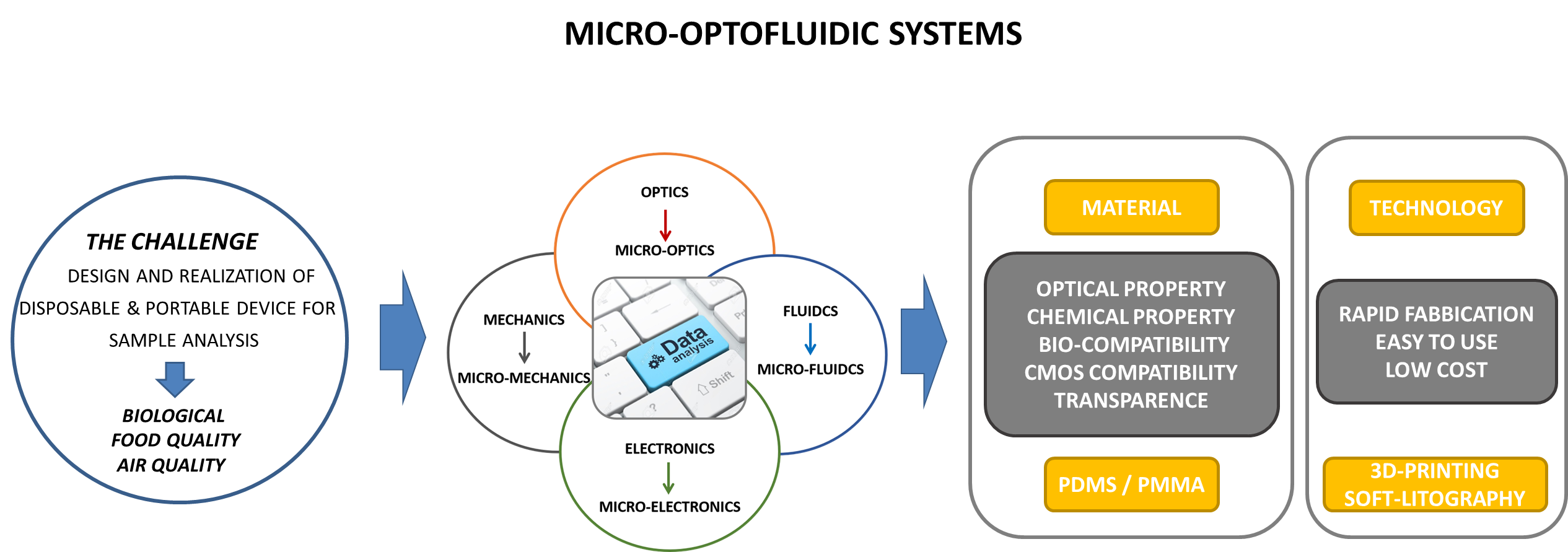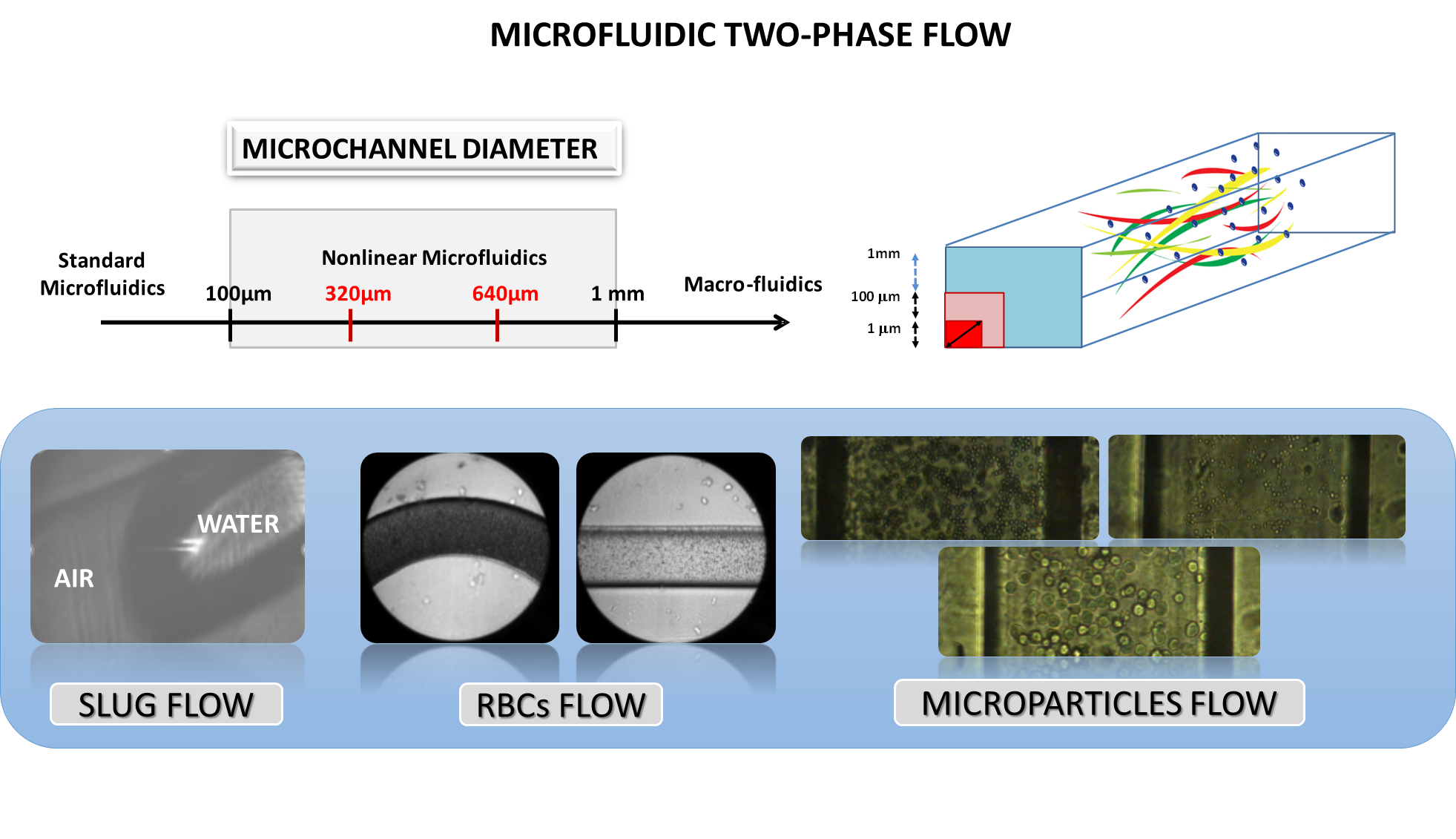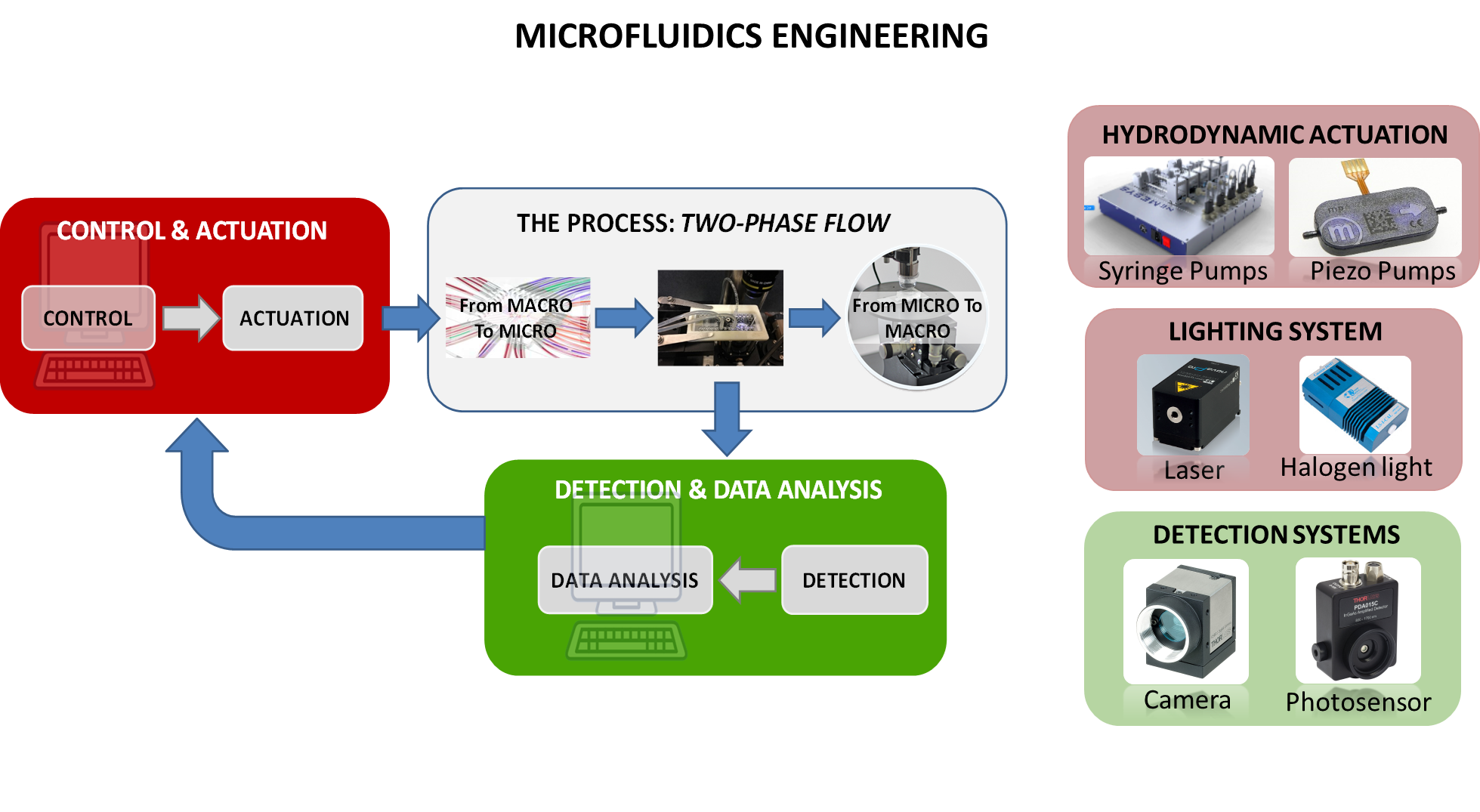Microfluidics |
|
Methodology and Technology for Microfluidic Systems Control Nowadays there is an increasing interest in the study of microfluidic (uF) two-phase flow systems where two immiscible fluids travel in microchannels as droplets or bubbles, respectively if in liquid or gaseous phase. In particular droplet/bubble microfluidics is growing importance for numerous applications ranging from emulsion generation to reaction within droplets (microreactors), high-throughput screening and even non-electronic-coding and computing functions. Current Lab on a Chip devices (LOC) use bulky external pumps and valves to control the fluids. The main drawback in microfluidics is that the increasing complexity of the geometry brings the necessity of a precise knowledge of bubble/droplet dynamics. Up to now the mechanisms that drives the input flows to lead a specific bubble temporization and dynamical patterns and, the stability of these dynamics due to slight changes in the input conditions or channel geometry are not fully understood. The nonlinear model of the two-phase flow can be described through a set of partial differential equation, different examples are presented in the field of Computational Fluid Dynamics (CFD), but due to its complexity the numerical implementation requires an high level of computation and time resources. Being a wide range of technologies available for the manufacturing of microfluidics device and in some case entailing a fast-design process and low cost in the production; the difficulties related to the numerical study become an important bottleneck for the development of microfluidics-based technology. The combination of optics and microfluidics offers unprecedented level of integration for building a new generation of optically actuated microdevices. These aspects combined with the advance in the microfabrication of optical detection methods based on the polydimethylsiloxane (PDMS) open the way for the design of an complete PDMS micro-optic-fluidic system in which microfluidic processed are embedded with point-wise actuation and detection and interact among each other.
   |
IN COLLABORATION WITH |
MSc THESIS PROJECTS IN MICROFLUIDICS
|
Brain Computer Interfaces
|
||||||
|
Strategies for the Analysis and Identification of Brain Dynamics Nowadays the possibility of different recording modalities of brain activity (as in the case of EEG, MEG and fMRI) allows a continuous monitoring of brain activities with high temporal and spatial resolution. Whereas MEG/EEG has high temporal resolution of below 100ms and therefore allow to explore the timing of basic neural processes at the level of cell assemblies, other methods such as fMRI have a high spatial resolution, typically in the order of 2-3 mm, and can record signals from all regions of the brain, unlike EEG/MEG that are biased towards the cortical surface.
Links
Brain Actuated Control The pathological states that lead to severe damage to the neuromuscular channels, disabling patients ' control over their external environment, drastically affect their quality of life, and increase the costs of the public health system. In the absence of methods for repairing the damage done by these disorders, an option for restoring function to those with motor impairments is to provide the brain with a new, non-muscular communication and control channel by brain–computer interface (BCI) that can interact with home devices lightening the emotional burden of having to depend on outside help even for simple tasks like turning up a thermostat. Brain-computer interfaces (BCI) allow the use of brain activity to control computers or other external devices, bypassing the peripheral nervous system. We aim to design and realize integrated platforms where domotic devices are heterogeneous and interconnected and are designed to improve the quality of life of impaired patients. Electroencephalography (EEG) and functional Near-Infrared Spectroscopy (fNIRS) based BCI platforms are the subjects of our investigation. Besides, BCI systems can be paired with robotic platforms to safely help patients reach and grasp desired objects in the environment. As a result, we are also developing Brain Actuated Control as a means of commanding these types of robots. The sent control signals are mostly the user's mental instructions based on motor-imagined training/tasks. Since such strategy is currently limited in the variety of control tasks available, we are currently working on multi-class classification of thoughts to enhance the number of degrees of freedom patients can regulate.
Ongoing Research
|
||||||
IN COLLABORATION WITH |
||||||
MSc THESIS PROJECTS IN COMPUTATIONAL NEUROSCIENCE
|
Additional Areas:
Portable Device for Real-Time Diagnosis and Control of Heart Dynamics, in collaboration with:
Decision Supporting System for Production Planning Control, in collaboration with:
